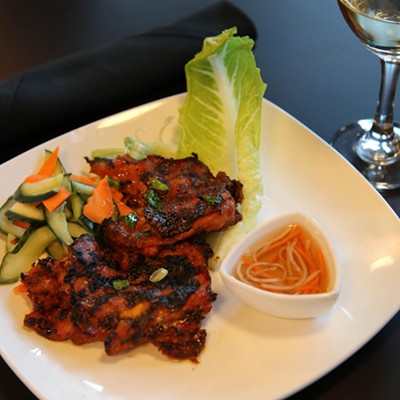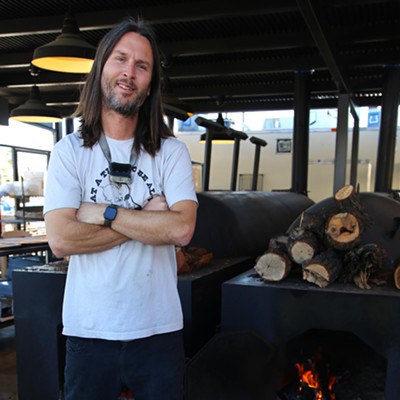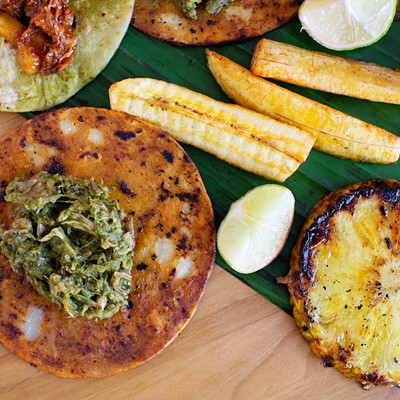While the World Cup rages on in Brazil, there's a fairly good chance that you, as an American, have little interest (the awesome fans of FC Tucson notwithstanding). But even if you don't care about the showcase for both the Best Soccer and Worst Haircuts in the World (France is a fair standout for both, by the way), there's no reason you have to ignore the beverages rolling out of the Beautiful Game's 2014 home.
While you could easily pick up a few bottles of Brazilian beer at, say, Plaza Liquor or the local Total Wine (Bohemia, Palma Louca or Xingu Black are a few options that you might be able to find), more adventurous booze-hounds would do well to find themselves a bottle of Brazil's national spirit, cachaça, in order to make themselves a glass of Brazil's national drink, caipirinha.
Cachaça (pronounced ka-sha-sa) is, similar to rum, derived from sugarcane—though, in this case, it's distilled from fresh sugarcane juice, rather than molasses, as rum is generally made from. Of course, since agricol rum is made from cane juice as well, the difference is technical, and all in regionality: much like champagne can only come from a certain region of France and tequila is only truly tequila when it's made in Jalisco and particular surrounding areas of Mexico, cachaça can only be made in Brazil. Anything else is just rum.
And when it comes to rum, there's only one place in town it makes sense to go to drink a rum cocktail Saint House Rum Bar, 256 E. Congress St.
"It's essentially the moonshine of Brazil," Saint House bartender Michael Bates says, and it's not a surprise; my first sips of unaged cachaça (a bit of a misnomer: like blanco tequila, cachaça is occasionally aged for short periods of time before bottling,) reminded me of bacanora, Mexico's outlaw agave spirit. It was a bit smokey with a vegetative taste to it, while still maintaining the underlying sweetness that comes from being distilled sugarcane juice. That said, it's not something that you want to sip; like most unaged spirits, it's better off in cocktails, and one in particular.
The caipirinha's popularity is huge and absolutely unsurprising; it's a classic, working-man's cocktail, made from three ingredients: sugar, lime and cachaça. Bates walked me through two varieties of the drink, made with the same ingredients and measurements. Both used Saint House's simple syrup, a healthy pour of cachaça and half a lime, cut in such a way that it was split enough to muddle well without being completely separate chunks.
The first is shaken, which Bates tells me isn't the traditional way to drink caipirinha. "The thinking is, why would you shake it, which makes you hotter, if the idea is to cool down?" He stirs the second, contrary to classic cocktail science (which can be boiled down to "shake sugar and citrus; stir strong spirits"). The difference was stark: The shaken version was ice cold, with the lime's tartness jumping out throughout the drink. The stirred version was, as Bates described it, "less uniform," with the qualities of the spirit and the syrup jumping out first, pushing the citrus out of the spotlight and mellowing as the ice melted; it's the version you drink when you're sitting on the porch, relaxing with a cocktail.
Bates made a number of drinks to follow up the caipirinha, all of which substituted cachaça into another cocktail style to add a Brazilian twist: a variation of Paul Clarke's Falernum #9, which drops cachaça in with lime, pineapple and nutmeg shavings; a take on the Cortez, replacing tequila with the Brazilian rum; and most surprisingly, an Old Fashioned made with an aged variety of cachaça, adding a bit of vegetal funk to the classic drink.
So sure, caipirinha may be the star of the cocktail world at the moment; but the versatility of cachaça has proven itself to be a worth addition to the game of any cocktail fan.









